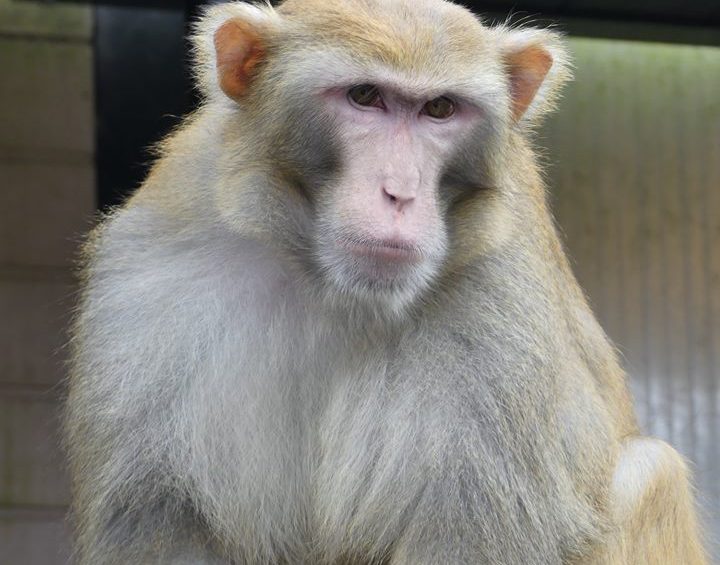Origin-Rhesus macaques are native to India, Bangladesh, Pakistan, Nepal, Myanmar, Thailand, Afghanistan, Vietnam, southern China, and some neighboring areas. They have the widest geographic ranges of any non-human primate, occupying a great diversity of altitudes throughout Central, South, and Southeast Asia
Lifespan- About 25 Years
Diet-Rhesus macaques have an omnivorous diet that includes roots, seeds, fruit and bark. They also consume insects and have been observed eating bird eggs. Rhesus macaques live in troops which may contain as many as 10-80 individuals.
Description- The rhesus macaque is brown or grey in color and has a pink face, which is bereft of fur. It has, on average, 50 vertebrae, a dorsal scapulae[clarification needed] and a wide rib cage. Its tail averages between 20.7 and 22.9 cm (8.1 and 9.0 in). Adult males measure about 53 cm (21 in) on average and weigh about 7.7 kg (17 lb). Females are smaller, averaging 47 cm (19 in) in length and 5.3 kg (12 lb) in weight. The ratio of arm length to leg length is 89%.
Conservation- The rhesus macaque is a species of Old World monkey. It is listed as least concern in the IUCN Red List of Threatened Species in view of its wide distribution, presumed large population, and its tolerance of a broad range of habitats.



 .
.
 The European rabbit is the only rabbit to be domesticated. Domesticated rabbits do not always look much like wild rabbits due to selective breeding to create morphologies from dwarf to giant sizes, various colour variations and fur length variations.
The European rabbit is the only rabbit to be domesticated. Domesticated rabbits do not always look much like wild rabbits due to selective breeding to create morphologies from dwarf to giant sizes, various colour variations and fur length variations.


